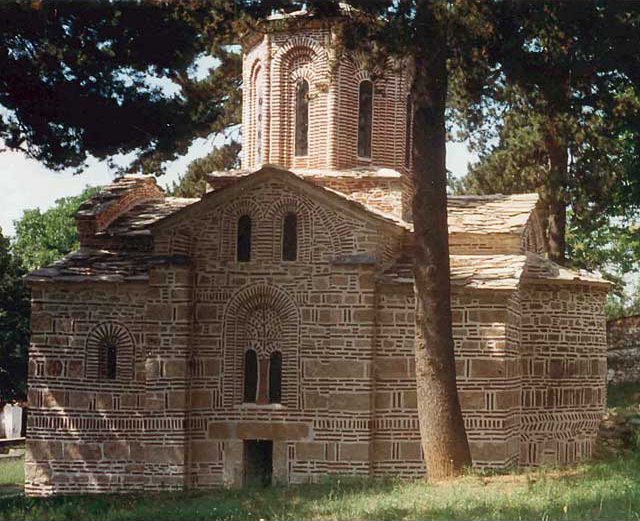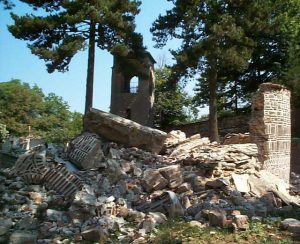The massive intentional destruction of cultural and religious property in Bosnia-Herzegovina, Croatia and Kosovo during the 1991–1999 Wars of Yugoslav Succession was the greatest destruction of cultural heritage in Europe since World War Two.

Orthodox Church of the Mother of God Hodegetria, Mušutište, Kosovo
In cities like Sarajevo and Mostar, structures that symbolised or held proofs of Bosnia’s historic diversity were attacked: libraries, archives and museums. This was the deliberate destruction of a country’s and a people’s identity and memory which many have called cultural genocide.
Cultural property has long been given legal protection in times of armed conflict, most notably with The Convention for the Protection of Cultural Property in the Event of Armed Conflict of 1954 (The Hague Convention), on the basis of its universal significance to mankind. However, the development of international human rights law after World War Two brought an emphasis on addressing the need for justice for victims of human rights abuses, their right to redress and reparation, and to call to account those who committed, or were responsible for, such abuses.

Built in 15th century, restored in 19th century, destroyed in July 1999
Part of this trend was the growth of international humanitarian law that advanced more complex reasons for the protection of cultural property, among them a people’s right to enjoyment of their cultural heritage and recognition of the links between cultural heritage and identity. With its ground-breaking legal precedents, the The International Criminal Tribunal for the former Yugoslavia (ICTY) in The Hague has played a seminal role in the development of this trend.
The inclusion of crimes relating to cultural and religious property in the ICTY’s Statute was an important addition to international legal instruments.





Follow us: